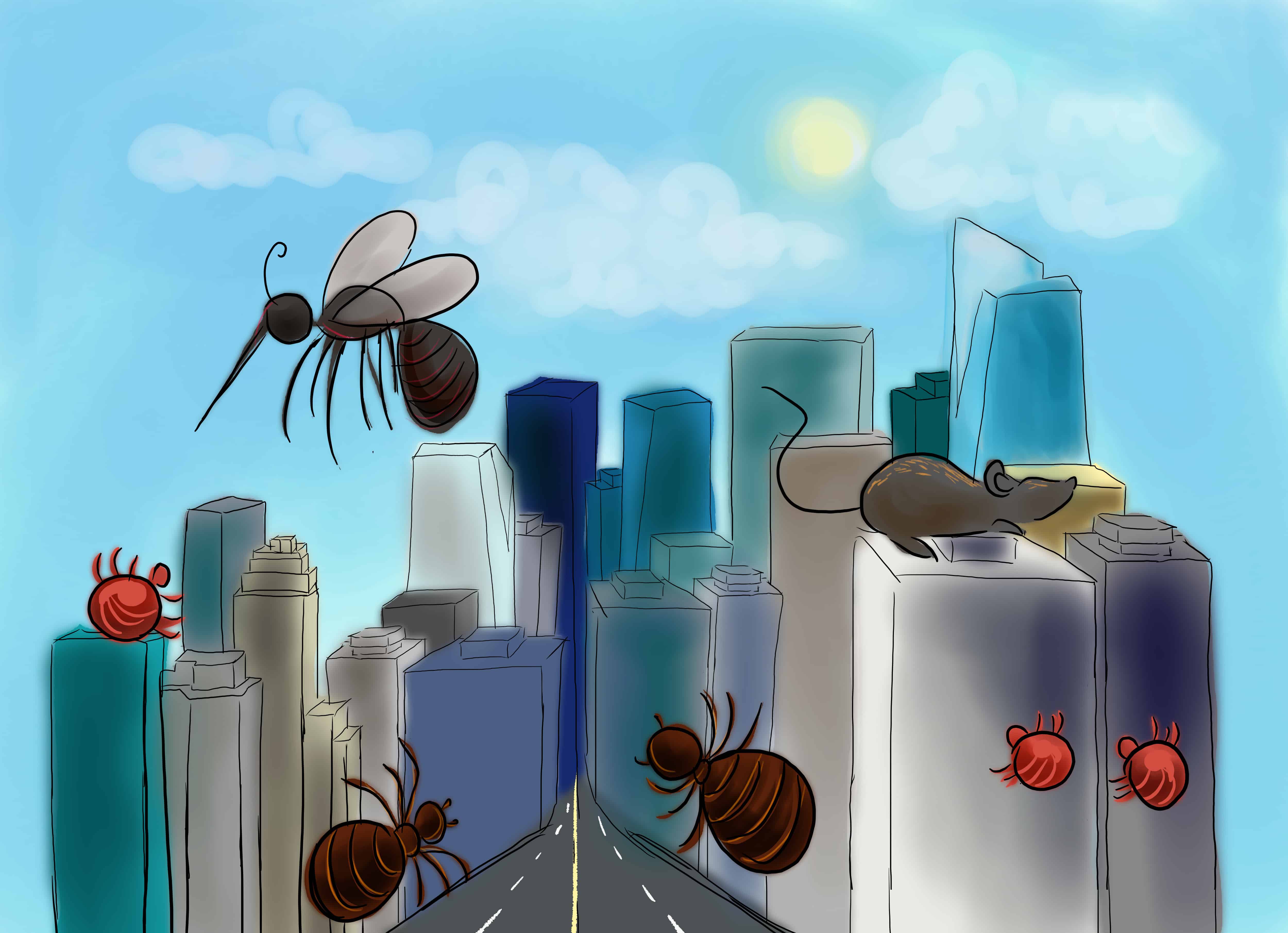In London’s underground subway stations, there’s a species of mosquito that has evolved to the point where it no longer needs to feed on blood to produce eggs. These mosquitoes are no longer dormant during the winter season, and unfortunately, they carry many harmful diseases and are now found in cities across North America as well.
It may seem strange to think that these mosquitoes have developed such traits so quickly. What could drive evolution to occur in such a short period of time? According to U of T’s Professor Marc Johnson and Professor Jason Munshi-South of Fordham University, the answer is right outside our doorstep: urbanization.
Recently, the two professors published an eye-opening study in Science suggesting that urbanization has yielded some rapid evolutionary consequences. But their interest in the topic didn’t start there.
“Jason started working on this problem around 10 years ago and I started on it about 5-6 years ago,” said Johnson. After investigating the influence of urbanization on evolution in their own experiments, they decided to look at it from a larger scale. “We became interested in trying to understand [if there are] any general patterns that are emerging if we [synthesize] every single study that has tested for how urbanization influences evolution.”
From mutations that result from random DNA replication errors to entire adaptations, the professors showed that urbanization has an effect on both the small-scale and large-scale factors of evolution.
“Pollution can influence mutation rates,” explained Johnson. “For example, if you go into Hamilton Harbor, there are steel plants there and they are emitting airol hydrocarbons into the air. These are mutagens, and they seem to be increasing the mutation rates of some of the organisms that live in the Hamilton area, such as the herring gulls.”
Urbanization can even affect the dispersal of native species. Organisms that have difficulty moving around, like salamanders, are now experiencing drastic genetic changes between different populations. “It’s almost impossible for them to move across a dry, busy road [and as a result] those populations are becoming genetically different from one another,” said Johnson.
The consequences of urbanization don’t end at genetic changes. According to Johnson, one of the most serious effects is a loss of biodiversity. “We are entering what a lot of people think is a biodiversity crisis. We’re seeing a very rapid loss of species around the globe and one of the main drivers of that is urbanization.” Johnson hopes that understanding the effect of cities on different organisms can help us save them and their ecosystems.
Pests are another unwanted byproduct of urbanization that have garnered the most media attention. Our urban lifestyle is partially responsible for animals like rats, bed bugs, and cockroaches evolving a resistance to pesticides. “Rats have adapted… to the warfarin poison that we’ve used… and mosquitoes, which are one of the most important vectors of human diseases, frequently adapt to the pesticides and the physical environments we create in cities,” explained Johnson.
With 55 per cent of the world’s population living in cities, understanding the effect of urbanization on different organisms is an increasingly pressing problem. “Our paper is just the tip of the iceberg,” said Johnson. “We still do not really understand really well how urbanization influences evolution,” and “we need to think about whether we want to design cities in different ways in order to conserve certain species.”
Though evolved mosquitoes and rats may seem like daunting outcomes of urbanization, the potential consequences run far deeper than that. Losing biodiversity is not reversible. Only by studying its effects are we able to understand the changing phenomena around us and protect life on this planet.


